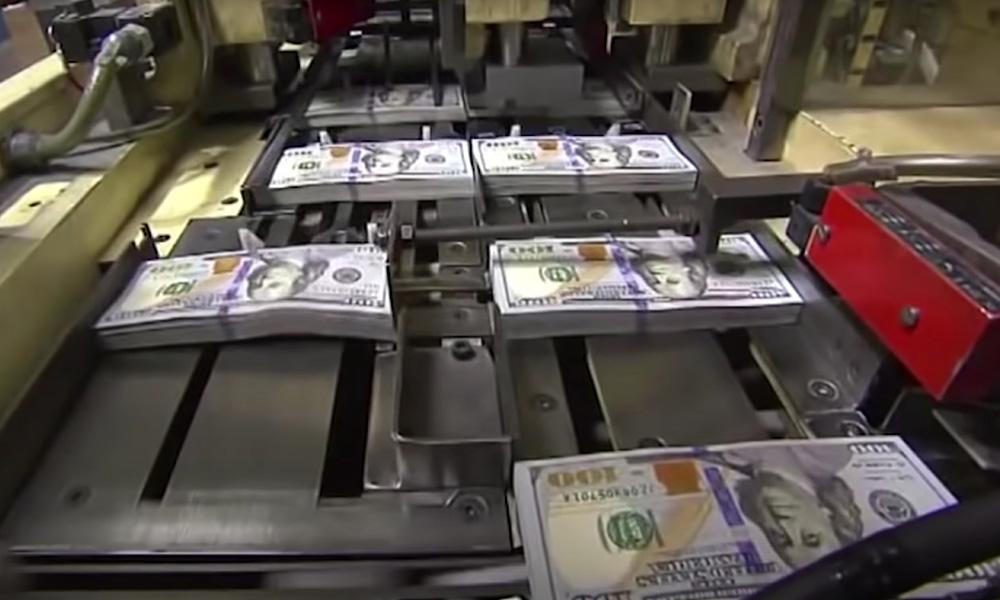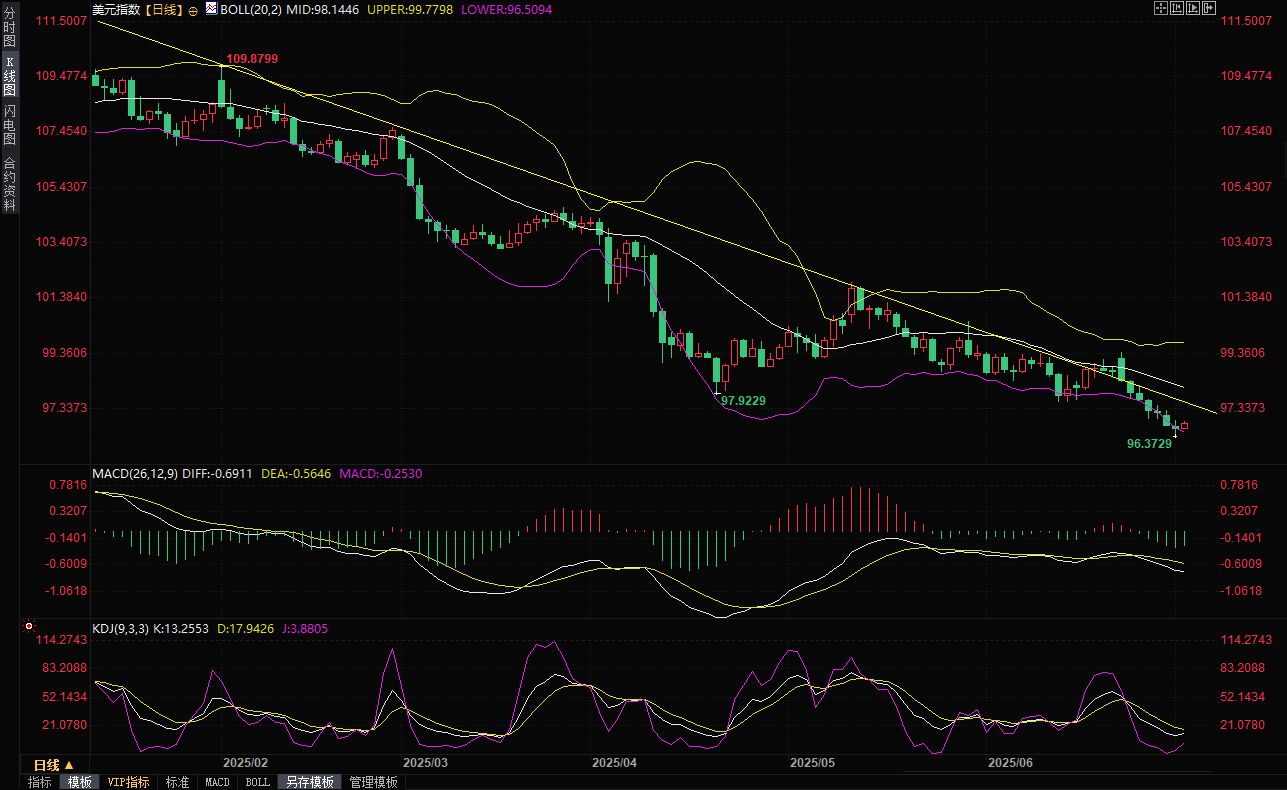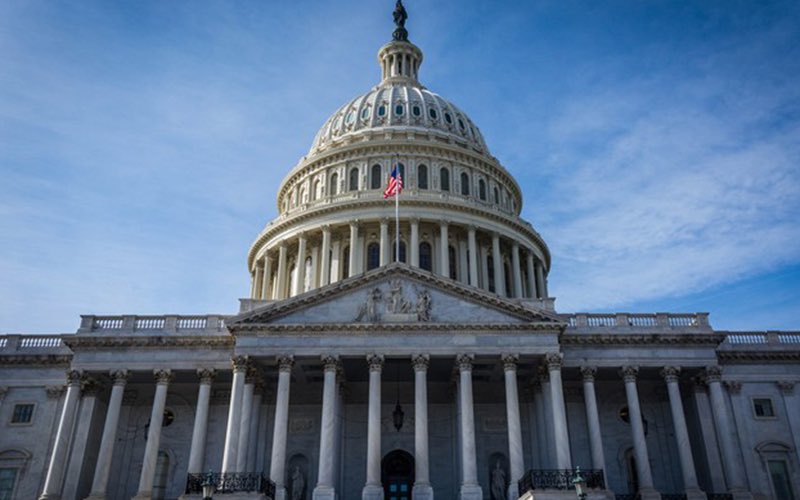The Fed's interest rate cut suspense and Trump's policy storm double-whammy! The US dollar struggles near a three-and-a-half-year low
2025-07-02 15:03:09

The suspense of the Fed's interest rate cut has resurfaced, and Powell's dovish stance has sparked heated discussions
Fed Chairman Powell reiterated the Fed's cautious approach to monetary policy in a speech at the European Central Bank's annual forum held in Sintra, Portugal on Tuesday (July 1). He made it clear that the Fed is open to further interest rate cuts and does not even rule out the possibility of taking action at this month's policy meeting, but stressed that all decisions will be based on the economic data to be released soon. This statement was interpreted by the market as a clear "dovish" signal, meaning that the Fed may further ease monetary policy in the short term to stimulate economic growth.
Powell's speech has drawn the market's attention to the upcoming monthly non-farm payrolls report. Just on Tuesday, the JOLTS job vacancy data released by the United States showed that the labor market still showed strong resilience, which made the dollar slightly rebound after hitting a low on Tuesday. However, the dollar index rose only slightly on Wednesday, currently around 96.85, just one step away from the three-and-a-half-year low of 96.373 set on Tuesday. The market generally expects that if the non-farm data is weak, the probability of the Federal Reserve cutting interest rates will further increase, and the dollar may face greater downward pressure.
Trump's new fiscal policy shocked the market, and the hidden worry of 3.3 trillion debt surfaced <br/>At the same time, the large-scale tax and spending bill promoted by the Trump administration has become another focus of market attention. The bill is expected to increase the US national debt by 3.3 trillion US dollars. It has been passed by the Senate and will be submitted to the House of Representatives for final approval. The core of the bill is to stimulate the economy through large-scale tax cuts and increased government spending, but this plan has also caused market concerns about the sustainability of US finances.
Rodrigo Catril, a strategist at National Australia Bank, pointed out: "The rapid growth of government spending far exceeds its fiscal capacity, which is not good news for the U.S. Treasury market. The expansion of debt may weaken market confidence in the U.S. dollar and become one of the important reasons for the decline of the U.S. dollar."
Analysts believe that such a huge fiscal spending plan could push up U.S. Treasury yields while exacerbating inflationary pressures and further weakening the attractiveness of the dollar.
Trump blasts Powell, putting Fed independence to the test
The downturn of the US dollar is not only constrained by economic data, but political factors also play an important role. Trump's recent public criticism of Federal Reserve Chairman Powell has continued to escalate, making the independence of the Federal Reserve a hot topic in the market. Just on Monday, Trump sent Powell a list of key interest rates of global central banks and annotated it in person, suggesting that the US interest rate should be adjusted to between 0.5% in Japan and 1.75% in Denmark, while criticizing Powell for "moving too slowly." This move not only exacerbated the tension between the White House and the Federal Reserve, but also further shook the market's confidence in the independence of the Federal Reserve's policy.
Pepperstone strategist Michael Brown said in a client report: "The continued erosion of confidence in the independence of monetary policy is an important reason for the slow but steady decline of the US dollar." Trump's continued pressure has made the market's expectations of the future policy direction of the Federal Reserve more complicated, and the safe-haven properties of the US dollar have also been challenged.
Global currency trends diverge, with the euro and pound performing well
Against the backdrop of a sluggish dollar, the trends of major global currencies have diverged. The euro fell slightly against the dollar to $1.1780 on Wednesday, but remained close to Tuesday's high of $1.1829 since September 2021, showing strong resistance to declines. The pound remained stable against the dollar at $1.3726, slightly lower than Tuesday's high of $1.3787 since October 2021. The dollar rebounded 0.15% against the Swiss franc and is currently trading around 0.7921 Swiss franc, still close to its low since January 2015, while the dollar rose slightly against the yen by 0.28% to 143.79 yen.
The relative strength of these currencies reflects the market's cautious attitude towards the future trend of the U.S. dollar. Analysts pointed out that the strength of the euro and the pound may be related to the optimistic expectations of the European economic recovery and the prospect of a possible interest rate hike by the Bank of England, while the rebound of the U.S. dollar against the yen is more driven by technical factors.
Summary: Tough times for the dollar
Currently, the US dollar is in a difficult time near a three-and-a-half-year low. The Fed's interest rate cut expectations, Trump's new fiscal policy, and his continued pressure on Powell together constitute the "triple storm" facing the US dollar. With the approaching non-farm payroll data and the final vote of the House of Representatives on the spending bill, market uncertainty has further intensified. Whether the US dollar can reverse its decline in the short term depends not only on the performance of economic data, but also closely related to the game at the political and policy levels.

At 15:01 Beijing time, the US dollar index is currently at 96.85.
- Risk Warning and Disclaimer
- The market involves risk, and trading may not be suitable for all investors. This article is for reference only and does not constitute personal investment advice, nor does it take into account certain users’ specific investment objectives, financial situation, or other needs. Any investment decisions made based on this information are at your own risk.










